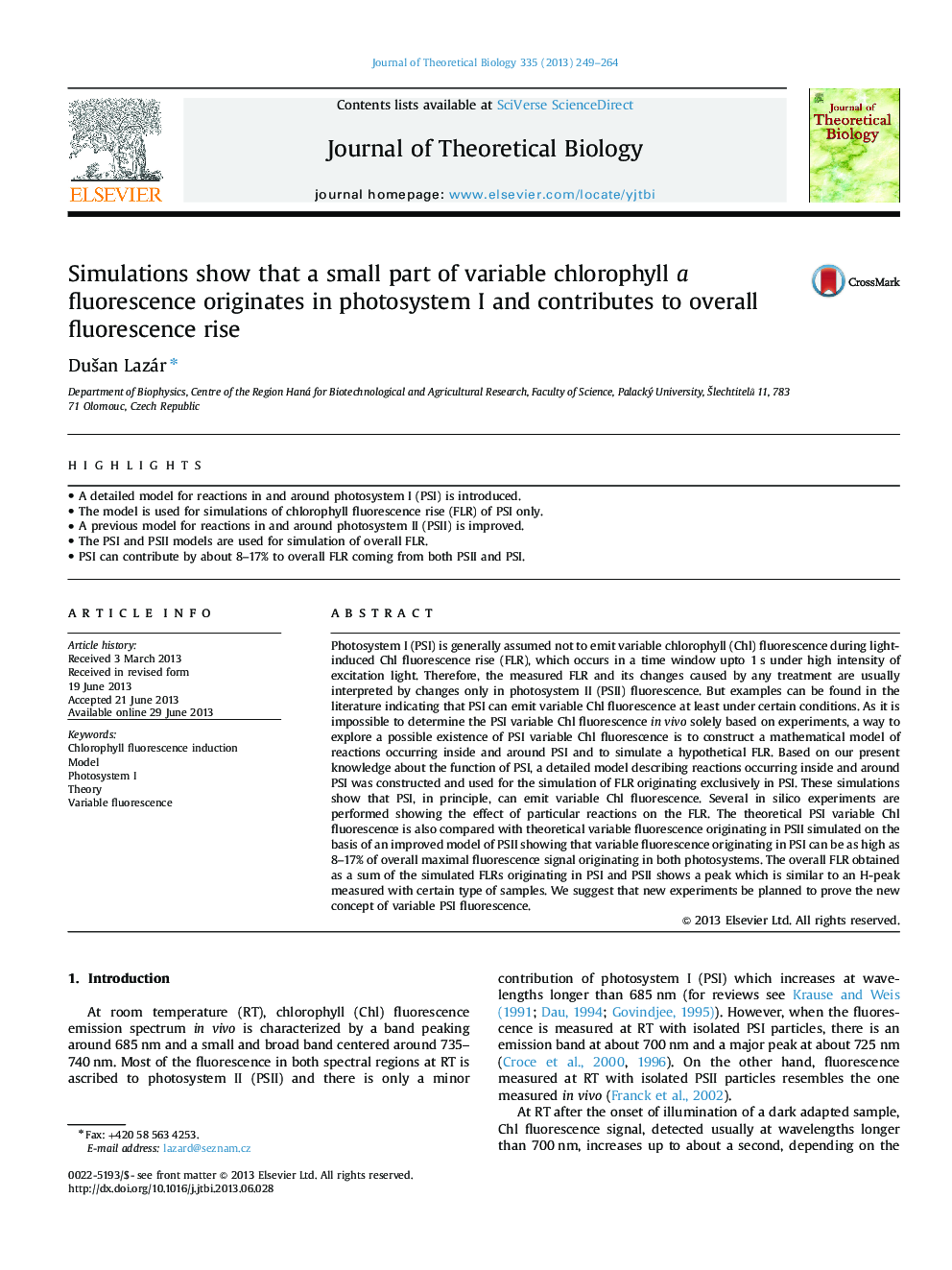| Article ID | Journal | Published Year | Pages | File Type |
|---|---|---|---|---|
| 6370711 | Journal of Theoretical Biology | 2013 | 16 Pages |
Abstract
Photosystem I (PSI) is generally assumed not to emit variable chlorophyll (Chl) fluorescence during light-induced Chl fluorescence rise (FLR), which occurs in a time window upto 1Â s under high intensity of excitation light. Therefore, the measured FLR and its changes caused by any treatment are usually interpreted by changes only in photosystem II (PSII) fluorescence. But examples can be found in the literature indicating that PSI can emit variable Chl fluorescence at least under certain conditions. As it is impossible to determine the PSI variable Chl fluorescence in vivo solely based on experiments, a way to explore a possible existence of PSI variable Chl fluorescence is to construct a mathematical model of reactions occurring inside and around PSI and to simulate a hypothetical FLR. Based on our present knowledge about the function of PSI, a detailed model describing reactions occurring inside and around PSI was constructed and used for the simulation of FLR originating exclusively in PSI. These simulations show that PSI, in principle, can emit variable Chl fluorescence. Several in silico experiments are performed showing the effect of particular reactions on the FLR. The theoretical PSI variable Chl fluorescence is also compared with theoretical variable fluorescence originating in PSII simulated on the basis of an improved model of PSII showing that variable fluorescence originating in PSI can be as high as 8-17% of overall maximal fluorescence signal originating in both photosystems. The overall FLR obtained as a sum of the simulated FLRs originating in PSI and PSII shows a peak which is similar to an H-peak measured with certain type of samples. We suggest that new experiments be planned to prove the new concept of variable PSI fluorescence.
Related Topics
Life Sciences
Agricultural and Biological Sciences
Agricultural and Biological Sciences (General)
Authors
DuÅ¡an Lazár,
